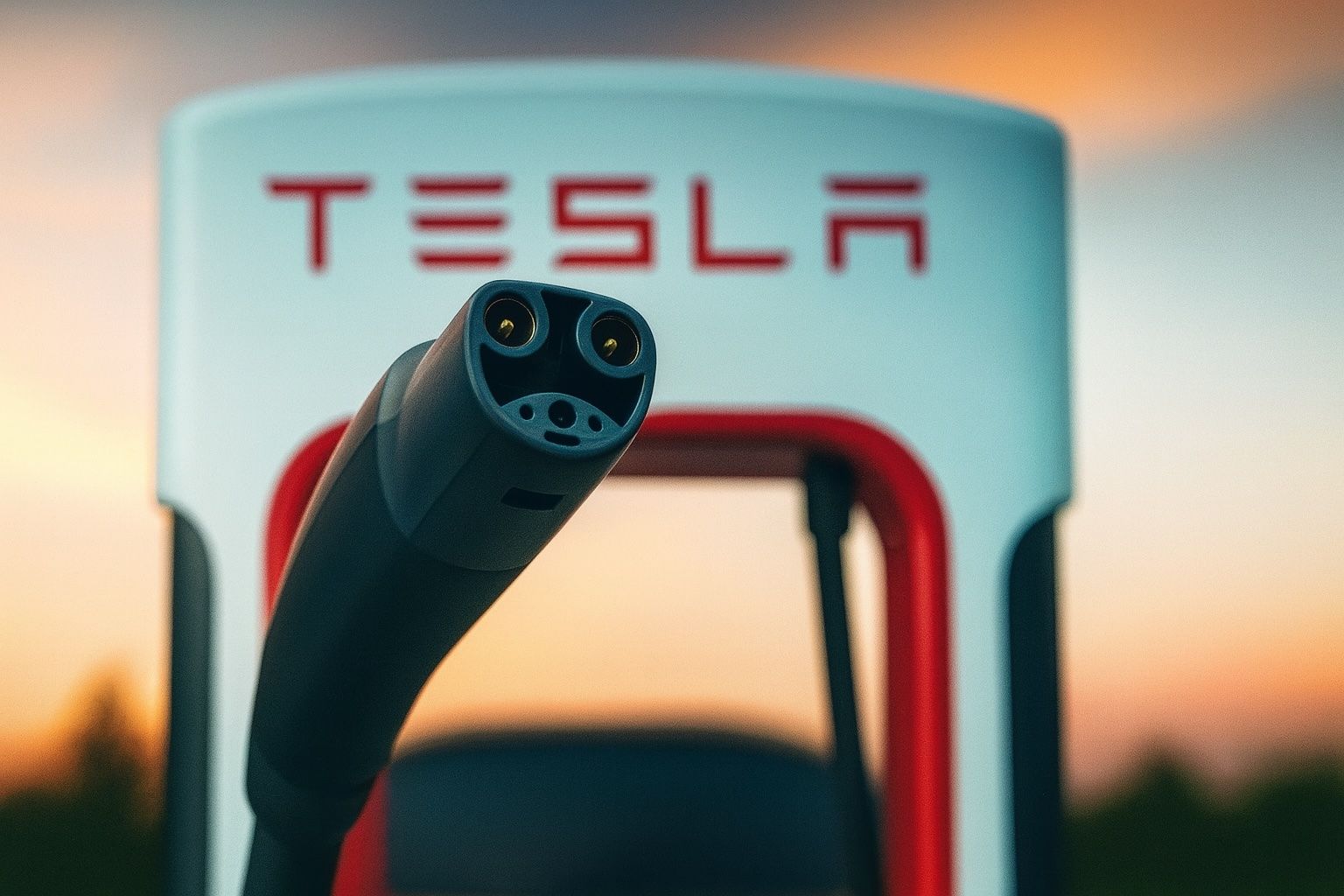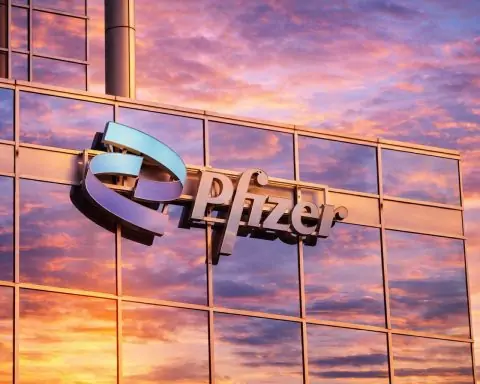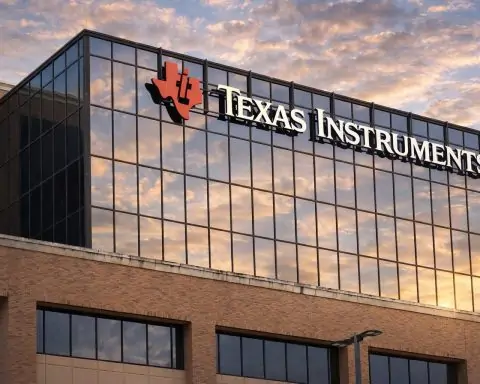- Stock swings: TSLA shares have jumped and dipped violently this week. After a 5% surge to about $435.90 on Oct 13, Tesla fell ~1.5% on Oct 14 to ~$429 [1]. As of Oct 16 midday the stock was trading around $430 (roughly flat on the day) [2]. Year-to-date TSLA is still up strongly (about +80% vs. the S&P 500’s ~17% YTD [3]).
- Record Q3 deliveries: Tesla reported 497,099 vehicle deliveries in Q3 2025, far above the ~443k Wall Street forecast [4]. This blowout was powered by a late-quarter rush as U.S. buyers clamored to claim a $7,500 EV tax credit before it expired [5] [6].
- New affordable models: On Oct 7 Tesla unveiled “Standard Range” trims of the Model Y and Model 3 (starting at $39,990 and $36,990) [7]. These cheaper versions cut features (smaller battery, no Autosteer, etc.) to hit lower prices. Investors were underwhelmed – TSLA stock slid about 4% after the announcement [8]. Analysts noted the $5k price cuts were modest and unlikely to be a game-changer [9] [10].
- Analyst outlook: Wall Street is deeply split on Tesla. Bullish firms like Morgan Stanley, Piper Sandler and Wedbush have 12-month targets in the ~$410–600 range, citing Tesla’s momentum in EVs, energy storage and AI/robotaxis [11]. By contrast, the average target is only ~$351, reflecting more cautious views [12]. Notably, HSBC maintains a “Reduce” (sell) rating with a $127 price target – over 70% below current levels [13].
- Market/Earnings: Tesla’s Q3 earnings report (due Oct 22) is the next big catalyst [14]. Investors will watch if the delivery boom translated into solid revenue and profit, or if margins were squeezed by heavy discounts. Outside Tesla-specific news, broader market moves (Fed policy, trade talks) and a new NHTSA probe into Tesla’s Full Self-Driving software (see below) are also driving market sentiment [15] [16].
- EV industry: Global EV sales hit a record 2.1 million units in Sept (up ~26% YoY), thanks to strong demand in China and a last-minute U.S. incentive rush [17]. However, Tesla’s market share is showing signs of strain: in Europe, Tesla’s sales fell about 22% YoY in August (its share shrank to ~1.5%) [18], as legacy automakers and new Chinese competitors ramp up EV production. Many rivals are now discounting to offset lost credits, validating the booming EV market but intensifying competition [19] [20].
Tesla’s mid-October stock action reflects this mix of good news and looming questions. On Oct 16, 2025, TSLA traded roughly flat in the mid-$430s (around $430 by mid-afternoon) [21]. That mild move belied a wildly volatile week. After hitting multi-month highs around $453 in early October, Tesla gave back ground on profit-taking. “Tesla’s stock has seesawed sharply,” noted our research: it surged ~5.4% on Oct 6, then plunged 4.5% on Oct 7, jumped again (+5.4%) on Oct 13, and slid ~1.5% on Oct 14 [22] [23]. Most recently, around Oct 10–14 the stock fell on a broad tech selloff and trade worries, then rebounded with the market on Oct 13 before softening again on Oct 14 [24] [25].
This October “rollercoaster” was largely news-driven. It began with Tesla’s blockbuster Q3 delivery report. On Oct 2, Tesla announced it had delivered 497,099 cars in the quarter – an all-time quarterly high and well above forecasts [26]. Management and Wall Street hailed the number, but there was an asterisk: most of the jump was driven by a one-time rush as buyers raced to beat the Sep 30 expiry of the $7,500 U.S. EV tax credit [27]. Tesla slashed prices and offered special financing in Q3 to pull forward sales – essentially “borrowing” demand from Q4. As a Tesla shareholder and analyst Ken Mahoney observed, “the $7,500 credit definitely… pulled forward demand this quarter,” meaning the incentive loss could leave a “void in U.S. demand in Q4” [28]. Indeed, after the delivery report TSLA initially popped but then dipped ~3–4% as investors took profits and braced for a potential sales slump [29].
On the bright side, this sales frenzy underscores Tesla’s underlying demand and agility. Nearly half a million buyers took delivery in one quarter – a feat no other automaker can match [30]. Tesla also set a record in its energy storage business, deploying 12.5 GWh of batteries in Q3 (more than all of 2024) [31]. This suggests Tesla’s efforts beyond cars – in solar and grid batteries – are finally paying off, providing an extra revenue buffer. Moreover, if interest rates fall later in 2025 (as many Fed-watchers now expect), that could make auto loans cheaper and help all automakers, Tesla included [32].
Tesla’s Q3 delivery news was followed by a heavily-anticipated product announcement on Oct 7. The company revealed new “Standard Range” trims of its bread-and-butter vehicles – a Model Y crossover starting at $39,990 and a Model 3 sedan at $36,990 [33]. These are about $5,000 cheaper than the previous base versions. To get the price down, Tesla removed some features: slightly smaller battery packs (still with ~320-mile range), slower acceleration, no Autopilot “Autosteer,” cloth seats, and other cost cuts [34] [35]. Elon Musk framed the move as making Tesla accessible to buyers who “don’t have enough money” for today’s EVs [36].
However, the market reaction was muted. TSLA tumbled roughly 4% on Oct 7 (with a further modest drop Oct 8) once investors realized these were mild trim changes rather than a breakthrough new car [37]. Many analysts noted the new prices were actually higher than what some buyers paid in September when the $7,500 credit was applied [38] [39]. As Wedbush’s Dan Ives put it, he was “disappointed” to see only ~$5k shaved off the price [40]. One analyst quipped that it was “basically a pricing lever and not much of a product catalyst,” arguing these cuts would only mix-shift buyers to cheaper trims instead of expanding demand [41] [42].
Across Wall Street, the verdict on this “budget EV” strategy was mixed. Some saw it as a sensible defense against losing the tax credit, while others felt it fell short of expectations. “I was definitely hoping for a more affordable Tesla in the sub-$30k range,” said advisor Shawn Campbell. “I just don’t know that this is enough… In my opinion, Tesla needs a sub-$30k EV” to truly broaden its market [43]. In contrast, Morningstar’s Seth Goldstein argued that pricing the Model 3/Y under $40k should help Tesla maintain delivery momentum despite the credit loss. He noted that a sub-$40k entry point could “help Tesla grow deliveries” by opening up to buyers who balked at higher prices [44].
Tesla’s pricing tweaks tie into a bigger debate: can the company fend off competition without diluting its premium brand? Many experts point out that while global EV sales are booming, Tesla now faces fast-growing rivals. EV sales hit record highs in September (up ~26% YoY) [45], but legacy automakers and Chinese startups are racing to undercut Tesla on price and scale. In Europe, for example, Tesla’s sales slid ~22% year-over-year in August, cutting its market share to around 1.5% [46]. Companies like VW, Ford, GM, Hyundai and China’s BYD are all cranking out competitive EVs and often throwing in steep discounts or dealer incentives now that federal credits are gone [47]. This intensifying competition vindicates the overall EV boom (which bodes well for the market at large) but squeezes Tesla’s growth and margins.
All of these developments have left analysts deeply divided. On the bullish side, many argue Tesla’s leadership in EV technology, its massive scale, and emerging revenue streams (batteries, software/AI) justify rich valuations. Morgan Stanley recently reiterated an Overweight rating on TSLA with a $410 target, Piper Sandler lifted its target to $500, and Wedbush’s Dan Ives still sees $600 as a reasonable 12-month goal [48]. These bulls emphasize that Tesla’s market cap (~$1.5 trillion) still reflects a growth narrative – the company is pushing into energy storage, AI-driven robotaxis, and more.
Bearish analysts beg to differ. Roughly half of analysts now rate Tesla Hold or Sell, pointing to its stratospheric valuation (P/E in the hundreds) and slowing growth. The average 12-month analyst target across the street is only about $351 [49], implying downside from current levels. HSBC goes even further with its Reduce rating and $127 price target [50]. As one Wall Street advisor warned, “Tesla needs a sub-$30k EV” to fend off cheaper rivals – otherwise its premium multiples aren’t sustainable [51] [52]. In short, Tesla’s price now “bakes in a lot of good news,” and any stumble in execution or demand could trigger sharp sell-offs.
Looking ahead, the key will be Tesla’s upcoming Q3 earnings report (Oct 22) and accompanying guidance [53]. Investors will scrutinize whether revenue and profit kept pace with deliveries, or if margins cracked under the weight of price cuts. The company’s commentary on Q4 demand will be crucial: has the much-discussed “pull-forward” of sales already hurt the pipeline, and what price-cutting (if any) will happen next? Investors will also listen for updates on the product roadmap (Cybertruck production, software revenue, potential new models). Some experts expect a Q4 delivery drop-off after the credit rush – one ETF manager warned we could see “a soft couple of quarters” ahead for Tesla [54] – so any signs of stabilizing demand could be a relief.
Tesla’s story continues to play out against a backdrop of broader market trends. On Oct 16, Wall Street was rattled by financial-stock weakness and trade jitters [55]. Fed policy and bond yields remain on investors’ minds; fortunately for Tesla bulls, current Fed talk leans toward cutting rates by year-end, which would likely boost high-growth tech names [56]. Meanwhile, regulatory issues lurk as wildcards. The U.S. auto safety regulator just opened a formal probe of 2.9 million Teslas equipped with its Full Self-Driving system (looking into reports of cars running red lights) [57]. News of that investigation sent TSLA down about 2% when it broke, a reminder that legal or safety setbacks can pop up unexpectedly [58].
In sum, as of Oct 16 Tesla stock encapsulates a familiar pattern: strong rallies on positive headlines, followed by caution on any hint of trouble. It remains near multi-year highs, with investors cheering record sales and new initiatives, but skeptics are quick to point out the risks of lofty expectations. The next week will likely hinge on Tesla’s earnings and guidance – which way the stock swings could depend on whether Tesla can prove it’s more than just its recent hype.
Sources: Author analysis based on recent financial news and data, including Tesla’s own filings and statements, Reuters and Investing coverage [59] [60] [61] [62]. (All information current as of Oct. 16, 2025.)
References
1. ts2.tech, 2. www.reuters.com, 3. ts2.tech, 4. ts2.tech, 5. ts2.tech, 6. ts2.tech, 7. ts2.tech, 8. ts2.tech, 9. ts2.tech, 10. www.reuters.com, 11. ts2.tech, 12. ts2.tech, 13. ts2.tech, 14. ts2.tech, 15. ts2.tech, 16. ts2.tech, 17. ts2.tech, 18. ts2.tech, 19. ts2.tech, 20. ts2.tech, 21. www.reuters.com, 22. ts2.tech, 23. ts2.tech, 24. ts2.tech, 25. ts2.tech, 26. ts2.tech, 27. ts2.tech, 28. ts2.tech, 29. ts2.tech, 30. ts2.tech, 31. ts2.tech, 32. ts2.tech, 33. ts2.tech, 34. ts2.tech, 35. ts2.tech, 36. ts2.tech, 37. ts2.tech, 38. ts2.tech, 39. ts2.tech, 40. ts2.tech, 41. ts2.tech, 42. www.reuters.com, 43. www.reuters.com, 44. www.reuters.com, 45. ts2.tech, 46. ts2.tech, 47. ts2.tech, 48. ts2.tech, 49. ts2.tech, 50. ts2.tech, 51. ts2.tech, 52. www.reuters.com, 53. ts2.tech, 54. ts2.tech, 55. www.reuters.com, 56. ts2.tech, 57. ts2.tech, 58. ts2.tech, 59. ts2.tech, 60. ts2.tech, 61. www.reuters.com, 62. ts2.tech







